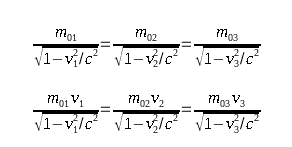Neutrinos are enigmatic particles that have fascinated physicists since their inception. Originally postulated as a means to address the complexities encountered in nuclear decay processes, neutrinos now play a pivotal role in our understanding of fundamental interactions and conservation laws. The primary aim of this discourse is to delineate whether neutrinos are indeed invoked to satisfy conservation laws, exploring their implication in various physical frameworks, particularly in weak interactions and particle decay.
The genesis of neutrinos can be traced back to the early 20th century, particularly through the lens of the β-decay process. Wolfgang Pauli first proposed their existence in 1930 to address the apparent violation of energy, momentum, and angular momentum conservation observed in beta decay. The introduction of neutrinos assuaged these discrepancies, permitting the conservation of energy and momentum within nuclear reactions. This seminal moment in particle physics underscored the necessity of neutrinos for the integrity of conservation laws in nuclear processes.
At the core of conservation laws lies the principle that certain physical quantities remain invariant in isolated systems. These quantities often include energy, linear momentum, angular momentum, and other quantum numbers, such as lepton number. The introduction of neutrinos resolved critical issues regarding the conservation of lepton number, especially in weak interactions where leptons and neutrinos are produced or annihilated. For instance, in a typical beta decay scenario, a neutron converts into a proton while emitting an electron and an antineutrino. The presence of the antineutrino serves to balance the lepton number, ensuring that it remains conserved across the interaction.
The fascination with neutrinos extends beyond their role in conserving existing quantities; they also challenge our understanding of the cosmos. Neutrinos interact very weakly, rendering them elusive and difficult to detect. This property enables neutrinos to traverse great astronomical distances without significant interactions with matter. Consequently, they can provide invaluable insight into processes occurring in the sun, supernovae, and even cosmic rays. Astrophysical phenomena, such as the fusion reactions occurring within the sun, emit torrents of neutrinos, thus allowing physicists to study solar processes unobtrusively.
Moreover, the very characteristics of neutrinos invite further contemplation regarding their contribution to conservation laws. Distinct from other particles, neutrinos come in three flavors—electron, muon, and tau—each associated with a corresponding charged lepton. The phenomenon of neutrino oscillation, where neutrinos transition between these flavors as they propagate through space, indicates a non-conservation of flavor eigenstates at the quantum level. However, the overall lepton number remains conserved, as the total count of leptons (including neutrinos and their associated antiparticles) is preserved in interactions. This intricate interplay between different conservation laws and neutrino behavior underscores the complexity of particle interactions.
In particle physics, the conservation laws imposed by the Standard Model provide a framework within which neutrinos operate. The model predicates that interactions are governed by the exchange of force-carrying bosons, with neutrinos participating in weak interactions mediated by the W and Z bosons. While neutrinos facilitate the conservation of energy and momentum, they also highlight potential limitations in the Standard Model, particularly concerning their masses. Recent discoveries of non-zero neutrino masses point to the possibility of physics beyond the Standard Model, suggesting that our current understanding of conservation laws might not be entirely exhaustive.
The discovery of neutrino oscillations, recognized by the Nobel Prize in Physics in 2015, accentuates how neutrinos are fundamental to examining conservation laws on a more profound level. The oscillation phenomenon suggests that neutrinos have mass, and the interplay of mass and flavor—properties traditionally thought to be distinct—raises pertinent questions. It proffers the concept that conservation laws must accommodate a more versatile framework capable of addressing newly observed phenomena without neglecting established principles.
Further exploration of neutrino interactions has led to intriguing implications for the cosmos at large, particularly in the context of dark matter. While neutrinos are essential constituents of the universe, their extremely low mass and weak interactions make them unsuitable as dark matter candidates. Yet, understanding their role offers insights into cosmic evolution and the formation of structures within the universe. The ongoing research into neutrino properties and their interactions continues to unveil layers of complexity that intersect with fundamental laws of nature.
Conclusively, the postulation of neutrinos serves a dual purpose: they fulfill the imperative of adhering to conservation laws while simultaneously challenging our conceptual frameworks in particle physics. The enigmatic nature and elusive phenomenology of neutrinos compel scientists to reevaluate existing theories, reaffirming the notion that foundational principles of physics are not static but evolve alongside scientific inquiry. As researchers delve deeper into the realm of neutrinos, it becomes evident that their contribution transcends mere conservation laws, embodying a nexus of inquiry at the forefront of modern physics.
The exploration of neutrinos is not just a pursuit of knowledge; it represents the quintessential human quest to unravel the mysteries of the universe. As our understanding of these particles continues to evolve, so too does our comprehension of the fundamental principles that govern the very fabric of reality.












